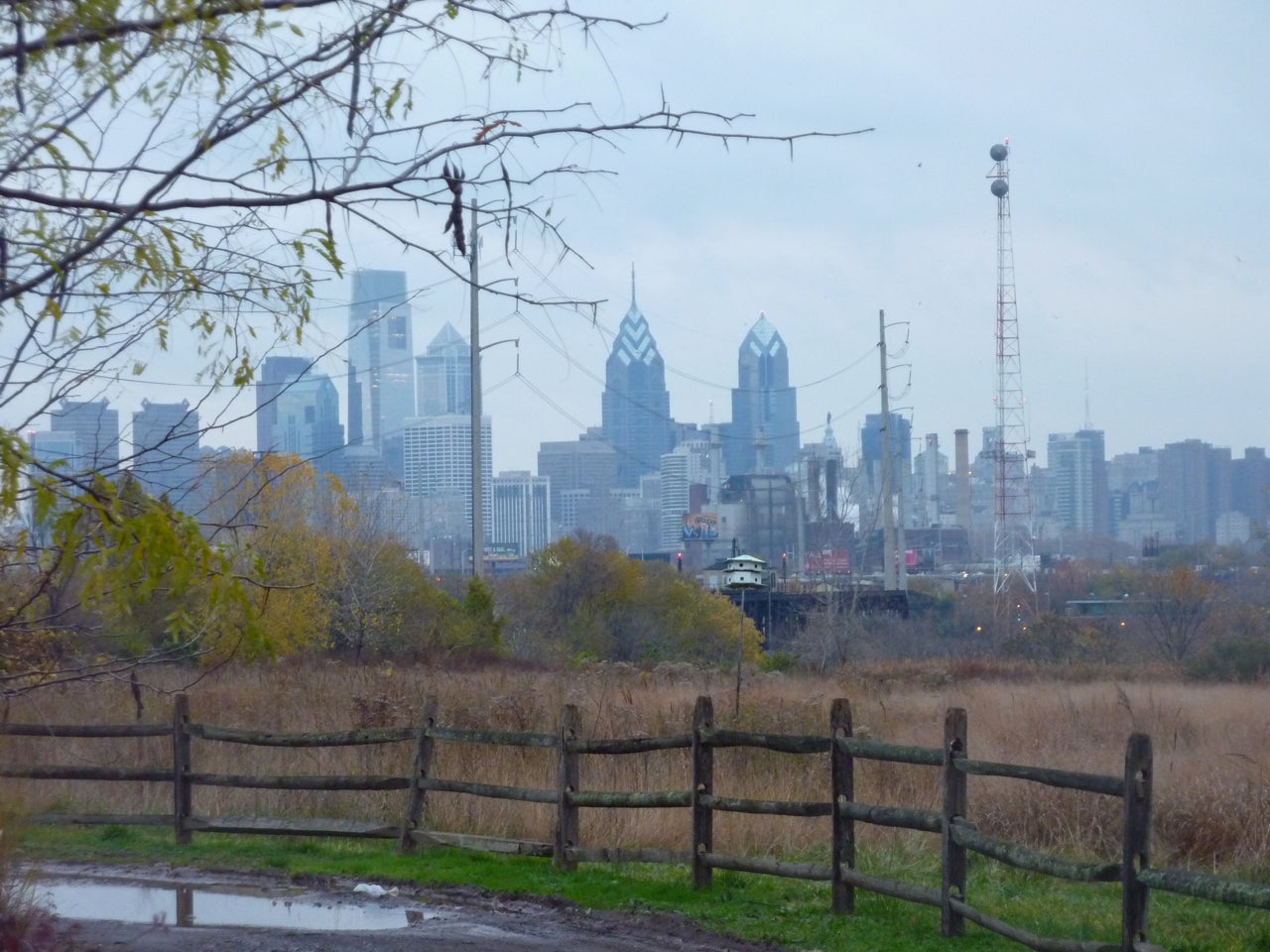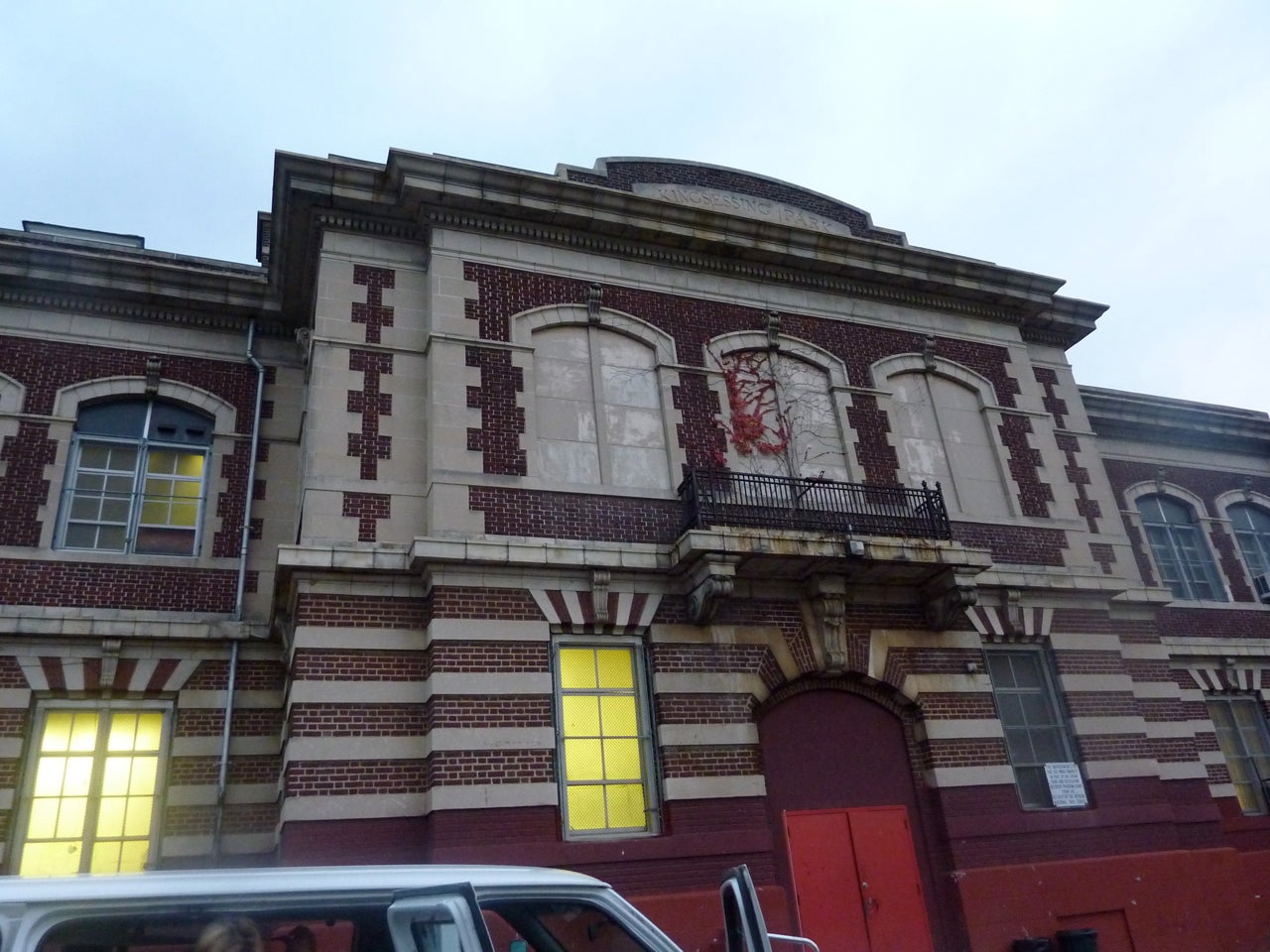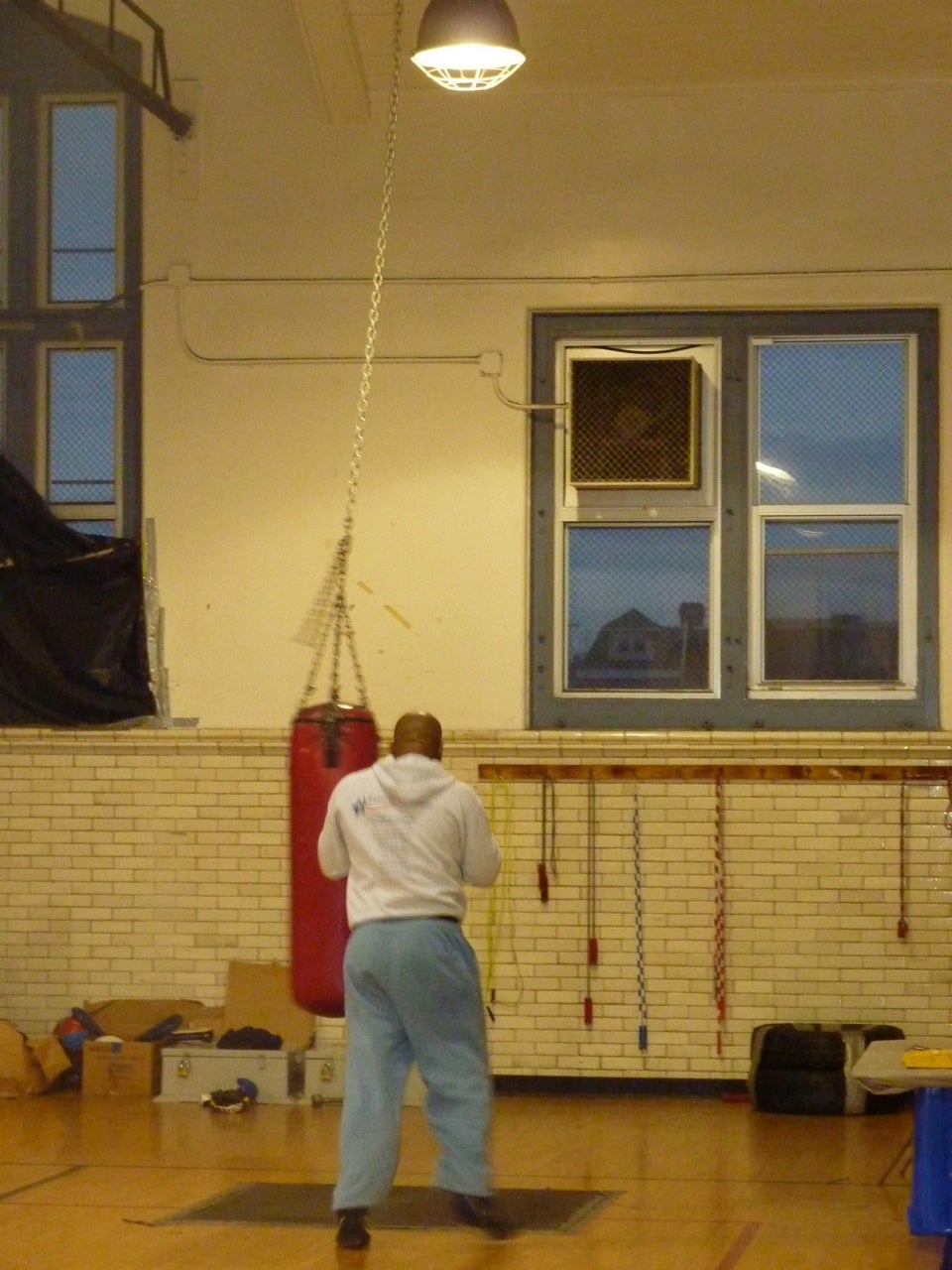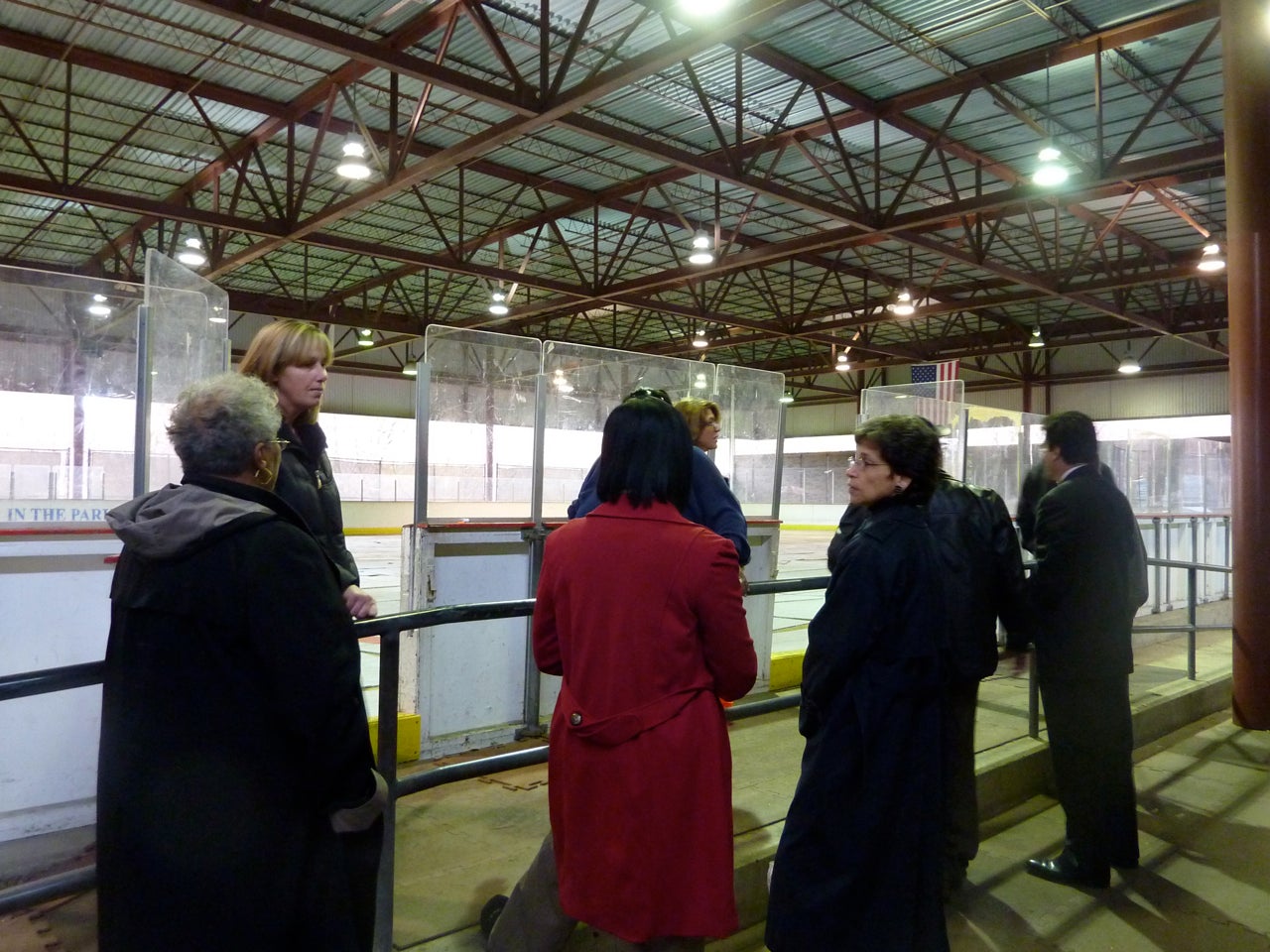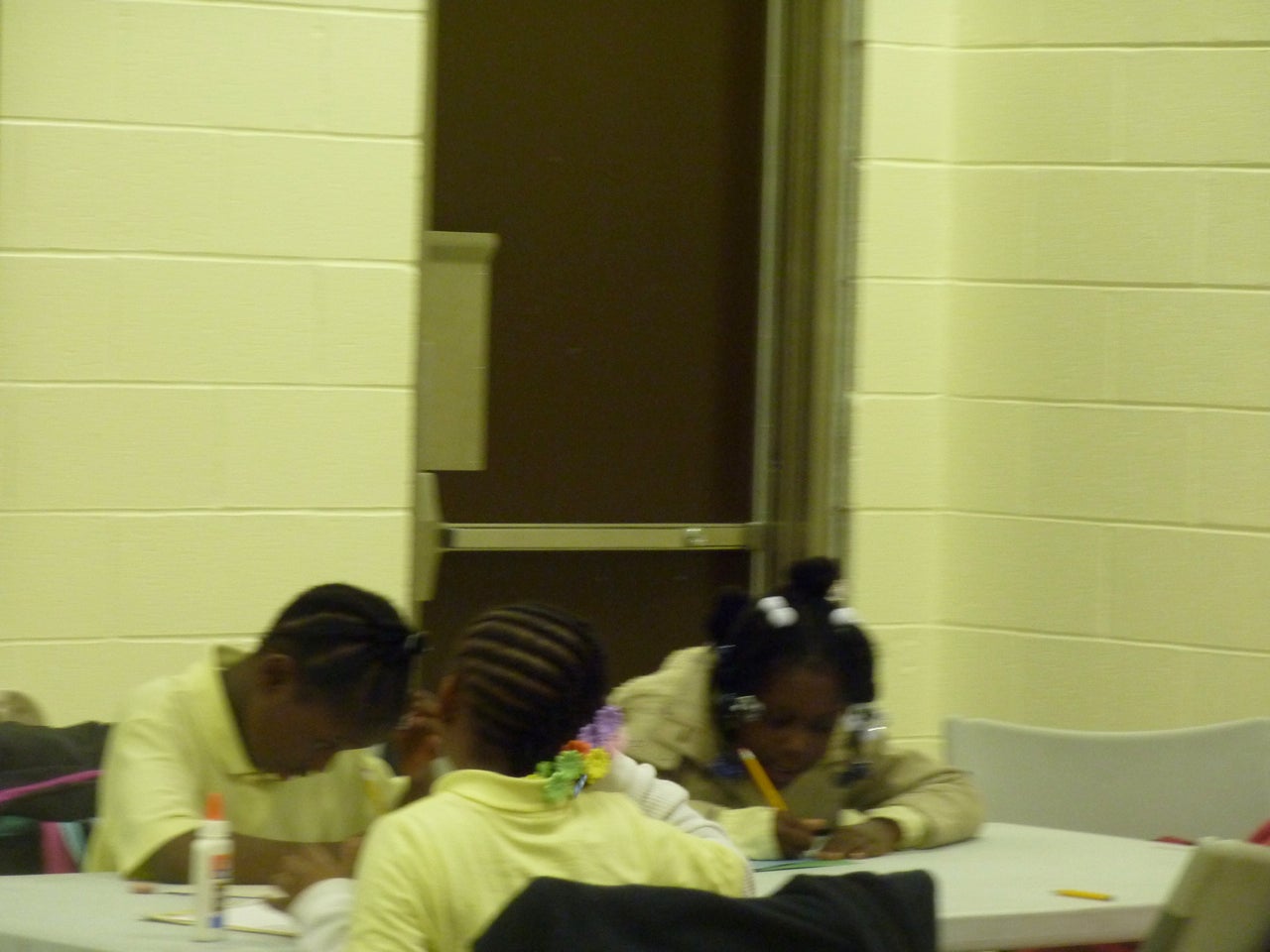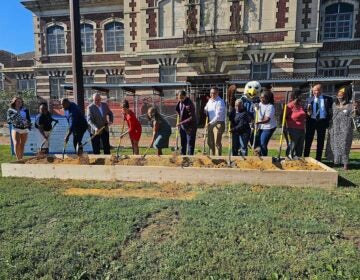Getting to better know the Parks & Rec system
A canopy of trees blazed orange and gold over Carroll Park, the stone entry posts looked new and intact, and — right on cue — a bright green trolley rolled past, adding to the photo-op presented at the corner of 59th Street and Girard Avenue in West Philadelphia.
“Six years ago, you wouldn’t want to walk through here,” said Recreation Commissioner Susan Slawson, indicating the park. “It was drug-infested, there was a lot of crime. One neighbor pretty much came out and took over. She just said ‘enough is enough.'”
Today, Carroll Park is reaching the tail-end of a new master plan. Neighbors, working with PHS’ Parks Revitilization Project, have repainted benches in pretty pastels and installed a new playground; this summer, they dedicated a new storage shack. And everyone, from residents of the tidy porch-fronted rowhomes that circle the park to the kids enrolled in neighborhood daycare centers, comes.
As Slawson spoke last week on an overcast afternoon, a handful of parks and recreation commissioners, city personnel, and this reporter, listened. Crammed into a seen-better-days white van, with Mark Focht, executive director of Fairmount Park, at the wheel, we had been invited on a bumpy ride through the western and southwestern parts of town.
It was the third such exploration since the new Parks and Recreation Commission officially merged this summer. Included in the most recent half-day tour: ice rinks, skateboards parks, and trails. The sublime (Bartram’s Gardens), the eye-opening (Kingsessing Rec Center), and the striving (McCreesh Playground). In most cases, the success stories came complete with tales of bootstrap volunteer efforts, generous grants, and dedicated city employees doing their utmost to make the best of often-limited supplies, staff, and equipment. Part orientation, part half-full-glass, the tours have proved enlightening, according to Commissioner Barbara Capozzi. “It’s great to see what the other neighborhoods are doing,” she said. “We all know our own parks very well, but I’ve been very impressed by what else is out there. The gym programs, the art classes. . . . ”
The van rumbled on to Morris Park, a Y-shaped wooded area that sits in the Cobbs Creek watershed. “Same story,” said Slawson. “Trash, weeds, you couldn’t see any of these woods even just three years ago. Now, it’s really beautiful.”
Driving past Wissahickon schist-clad twins, we moved onto Cobbs Creek proper, to a point where its two golf courses — Cobbs Creek (celebrated in the past as one of America’s top municipal courses ) and Karakung — sprawled before us. Focht filled us in on the city’s golf picture: six courses, two managed by nonprofit community groups, the other four (including the Cobbs Creek courses) operated by Billy Casper Golf, Inc. This year marks the 25th anniversary of turning the courses over to private hands, according to Focht. “We put no revenue or staff into these courses,” he said.
The Commissioners had questions. “How well used are they?” asked one. “Are there children’s programs?” asked another. Cobbs Creek averages 35,000 rounds annually, offered Focht, while Karakung comes in at about half that. (The average citywide, he added, is about 20,000-25,000 rounds.) Parks & Recreation Commissioner Mike DiBerardinis said that two courses — FDR and Walnut Lane — offer specific children’s programs, then added that throughout the parks and rec system (as well as the school system) other kids’ golf programs are in place.
We drove along the Cobbs Creek recreational trail for a mile or so, then clamored down for our first true stop, the Laura Sims Skate House. Located at 63rd Street and Cobbs Creek Parkway, it’s one of five ice skating rinks in the system. A drab 60s-era structure — with a sign on one side that still reads Cobbs Creek Ice Rink despite a renaming that dates from 1999 — its yellow-painted cinder walls inside were similarly uninspiring.
But DiBerardinis excitedly pointed out the changes that will soon be coming, thanks to a grant from the Ed Snider Youth Hockey Foundation. These include removing a group of benches that sits in the middle of the smaller locker room so the facility’s public space can be better used by the community and, most significantly, enclosing the rink so its season can be extended beyond the winter years. “Combined with the nearby environmental center and several new playgrounds that have opened, this facility is just a part of a fabulous complex of natural and built assets,” DiBerardinis enthused. “Together they really show the possibility of the merger to create a broad spectrum of programming.”
At McCreesh Playground, the group disembarked again to view a rather makeshift skateboard space that’s in the process of being adapted from an old hockey rink, thanks to the nonprofit Franklin’s Paine Skatepark Fund (http://www.franklinspaine.com/blog/proposed-skatepark-projects). We followed rec center manager Tim King inside a tiny red building. About 15 kids sat at cafeteria tables — placed against (again) yellow cinderblock walls and atop green-and-white linoleum — doing their homework. “The lion’s share come from Joseph Catherine Elementary,” explained King, who also indicated that about half of the 33 registrants were absent because of a Muslim holiday.
Back in the bus, several commissioners marveled at the system’s committed employees, unsung volunteers, and tightly stretched dollars. Several also commented on another wondrous sight: two beat cops slowly strolling along Paschull Avenue. The battered ruins of Mt. Moriah, an historic cemetery where Betsy Ross was originally buried (she’s since been reinterred in the courtyard of her Old City house), came into view. Knee-high weeds spilled onto the street, prompting one Commissioner to comment that the place “needs some love” and another to ask, “Do cemeteries count as green space?”
A brief pass by Francis J. Myers Rec Center — located in an old church — prompted Commissioner Sarah Clark Stuart, campaign director at the Bicycle Coalition of Greater Philadelphia and co-coordinator of the Schuylkill River Park Alliance, to bring up a new greenway that will run along 58th Street. It promises to better connect Center City to Bartram’s Garden, the next stop on the itinerary.
That “hidden gem,” as Focht rightly called it, was in fine form. A National Historic Landmark that dates to the mid-18th-century, the site has been part of the Fairmount Park system since the 1890s, Focht said. A cadre of Garden personnel greeted the group, showcasing its meadow (complete with skyline view), woods, and historic trees.
A pleasant diversion, but not much of a surprise to this bunch. The real eye-opener came at the next stop, Kingsessing Rec Center, built in 1916 as the Belmont Cricket Club. A fantastic Victorian hulk, the center is divided into two wings — one dominated by basketball courts, the other by boxing facilities. As rec manager Robert Jackson talked, kids streamed between the building’s dramatic arches and ran up and down its central staircase. Downstairs, boys shadowboxed; upstairs, girls shimmied to a hip hop dancing class.
Jackson introduced a volunteer who’s taken it upon herself to cook Thanksgiving dinner at the center for the past few years, and then led us to a room filled with donated Dell computers, another with a tv and sofas, and still another with a billiards table.
The sky was darkening and as night fell, the little white van chugged back towards Center City, passing Clark Park. The star of West Philadelphia, its nine acres are now undergoing lighting, paving, and drainage revamps. We crossed the new South Street bridge, and moved on to the swath of parks that line the east bank of the Schuylkill River. The ballfields at the 1970s-era Markward Playground, we learned, have recently enjoyed a $25,000, Friends-sponsored renovation.
With its abundant community garden, two dog runs, playgrounds, and riverside setting, this space “embodies the merger before there even was such a thing,” said Focht, who then pointed out that even the rec center’s design ran a “little less scared” than other similar facilities. This bunker, at least, was offset with a few glass blocks.
The tour wrapped up with a stop at the southern terminus of the Schuylkill Banks, situated a few blocks north of the park. Focht talked about plans to link the park and the traii via a boardwalk built over the river. Estimates peg this project at about $10 million, to come via a TIGER grant. Envisioning this — one of the most exciting projects on the Philadelphia drawing board and arguably one of the greatest connectors for Center City — proved a fitting way to end a tour filled with promise, surprises, and inspiration.
En route to its ending point, the van swept past Rittenhouse Square. Parc’s outdoor seating was packed, the labradoodle walkers were in full force, and shoppers seemed to have forgotten that there’s a recession going on.
Fifty years ago, Jane Jacobs idealized the Square as the optimal park. But this great space has become still livelier and more beautiful over the years. Much of that change has come from private hands, whether Friends groups, nonprofits, restaurateurs, or condo owners. It seems not much to ask that neighborhood parks and recreation centers — so loved, relied upon, and well-used — be given their own fair chance. Dreary yellow paint and cracked sidewalks notwithstanding, the stops on the tour suggest that the city’s role as supporter and coordinator can go a long way toward helping those who would help themselves.
Contact JoAnn Greco at www.joanngreco.com
Check out her new online magazine, TheCityTraveler at www.thecitytraveler.com
WHYY is your source for fact-based, in-depth journalism and information. As a nonprofit organization, we rely on financial support from readers like you. Please give today.



